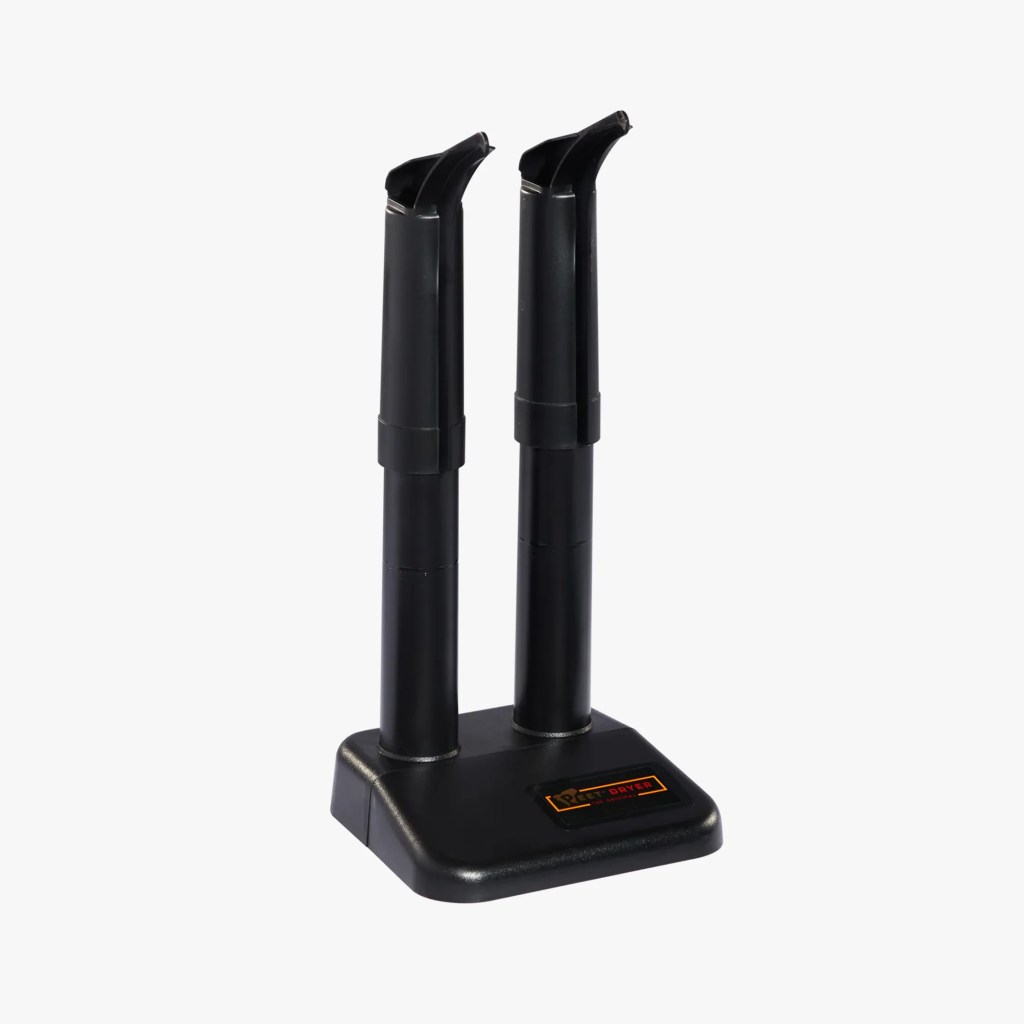How to Dry a Pair of Wet Boots. And Fast
Are spring showers wrecking your leather? Here’s how to draw the moisture out.
 Photo by Chandler Bondurant
Photo by Chandler BondurantEvery product is carefully selected by our editors. If you buy from a link, we may earn a commission. Learn more
We’re all for getting outside and enjoying everything the open air has to offer … no matter what comes with it. But sometimes, these trips — no matter how small or mundane (like commuting) — take a significant toll on your gear. You’re walking, working, whatever it is you’re doing, and then splash. Your boots are soaked to the bone.
Depending on the boot, and the materials it’s made from, a complete dry could take a couple of days. But there are tools out there designed to accelerate the process. What was once a half-week project is now an afternoon’s task. Follow along below.
First, clean your boots
Start by cleaning your boots. We have an entire guide dedicated to teaching you how. Aren’t you lucky? I know getting wet boots even wetter sounds like a contradictory first step, but letting dirt or mud or salt crust to the exterior while they dry won’t make for a boot you’re eager to put back on.
Choose your dry method
Now you have to dry them. Take off the laces and remove the insole (if you can).
Assess how wet your boots are. Are they dripping? Drastically heavier than they were before? Can you ring out the tongue? Does the leather feel flimsy? Does the footbed feel squishy? These are all relatively simple (maybe weird) questions, but they’re important to ask nonetheless.
Now it’s time to dry your boots. But this guide comes with a serious warning: Placing your boots super close to a fire or inside an oven both seem like surefire ways to dry them, but they aren’t. Avoid direct heat at all costs. You might think they’ll be fine but melting a part you didn’t know was rubber or warping a part you didn’t know could bend are fast ways of ruining a fine pair of boots. TLDR: Avoid direct heat.
You’re faced with a few options when it comes time to dry them: stuff them with dryer sheets and leave them to sit on their own, maybe near an open window or in front of the air conditioner; rack them on a boot dryer; blot them with a towel; or dredge them in a bucket filled with rice or cat litter. Never tumble dry your boots.
The Hands-Off Approach: Air Dry
This method is best saved for thin, cheap boots — ones you’re not feeling too attached to or boots you know for sure will survive if left to fend for themselves.
Stuff both boots to the brim with dryer sheets or newspaper — whatever will absorb moisture. Dryer sheets will also impart a laundry-like smell, if you’re into that. Then leave them for two days minimum to guarantee they’re dry. Any shorter and you risk missing moisture that could probably go undetected to your touch. Sure, they’ll dry while you wear them, but who wants wet socks?
The Quickest Method: Boot Dryer
On Amazon alone there are hundreds of automatic shoe drying racks. Some that look like props from Ghostbusters; others look downright diabolical (like a giant squid getting ready to pull you under). Go with ones that have a lot of reviews; especially positive ones — like those from Peet, which gently circulate warm air through the inside of your boots.
 Peet Shoe Dryer
Peet Shoe DryerPeet Original Electric Shoe and Boot Dryer
The instructions are fairly straightforward: slip the boots down onto the shaft and turn the dry cycle on. Remove them once they’re dry. Peet recommends leaving boots overnight, but they could be dry within hours. This is by far the fastest method.
For Soft Materials Like Suede: Towel Dry
Blotting your boots down with a towel works fine with barely wet mesh, canvas or suede boots, but don’t go this route with other leather, which can stand up to other methods.
Use an absorbent towel and press it down into the surface of your boots, soaking up water in process. Repeat until dry — or at least on the way.
The Most Desperate: Cat Litter
Whenever your phone breaks, someone, without fail, will suggest dropping it into a bin filled with rice. “It’ll work,” they promise you. And it sometimes does!
The same treatment can be given to boots, which are far less delicate than your new iPhone. Dredge your boots completely in a loose material of your choosing. Rice or cat litter work best — both of which a high percentage of people have on hand already. If not, stocking up on more won’t break the bank; and it’s worth it to save your boots. Leave them in the mix overnight and check on them the next morning. Repeat as needed.


